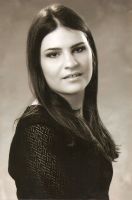American Lost Generation

The war veteran`s way of life in the novel ``The Sun Also Rises`` resembles the way of life of a group of writers who gained much popularity in their literary expansion after World War I. They reached their peak in popularity from 1918 throughout 1930. They were called ``Lost Generation``. This term was coined by an American writer and poet Gertrude Stein. These writers dealt with the following themes: self-exile, indulgence and spiritual alienation. Their works were mostly autobiographical. They sought in Paris liberation from the structures of American society that made them feel like outcasts.
During the World War I many good young men went to war and died, or returned home either physically or mentally wounded. Many of the men who fought were only about nineteen years old. They were taken from their sheltered homes and thrown into unimaginable chaos. They experienced horrors beyond belief. These kids saw their comrades choke to death because of the fatal mustard gas. They saw their friends shot, dying slowly of excruciating pain. The dead bodies were innumerable and they had to face their enemy eye to eye and kill them. In the words of Herbert Hoover, ``Older men declare war. But it is youth who must inherit the tribulation, the sorrow and the triumphs that are the aftermath``. (Bruun and Geitzen, 2010: 165).
The war disfigured and tore away precious lives. Its horrors embedded themselves in the minds of the survivors. The survivors were brushed into obscurity by the individuals attempting to justify the annihilation of the world that was. After World War I, American society enjoyed high levels of prosperity during the ``roaring`` 1920-s as the economy grew. At the same time, Prohibition made bootleggers rich and led to an increase of organized crime. Some American writers were discontent with the changes and they left America and went to Paris. They could not cope with post-war America. They sought the meaning of life, drank excessively, had love affairs and created some of the finest American literature to date. Their works show that these great artists suffered for mankind.
Aside from the loss of innocence caused by World War I, the group, for the most part, shared the stylistic bond of literary modernism. Influenced by turn-of-the century decadent poets and aestheticism (which proclaims the doctrine ``art for art`s sake``), the modernist movement was a move away from realism. Instead, characters` subjective experiences were portrayed through stream-of-consciousness techniques, symbolism, or disjointed time frames. Living cheaply in Paris, writers could sell their work to the growing number of magazines and publishers back in the USA, that were hungry for new talents and willing to pay handsomely. Hemingway wrote about inexpensive cost of living.
One of the earliest he sent to the ``Star`` told how cheaply two people could live in Paris There is a splendid restaurant where prices are a la carte. My wife and I have an excellent meal there…for fifty cents a piece. There are several hundred small hotels…where an American or a Canadian can live comfortably, eat at attractive restaurants and find amusement for a total expenditure of two and half to three dollars a day. (Reynolds, 1999: 5).
Speaking to Ernest Hemingway, an American writer and poet, Gertrude Stein, said: ``you are all a lost generation``. In fact, she coined the expression. This group included authors such as Ernest Hemingway, F. Scott Fitzgerald, Ezra Pound and T. S. Eliot. These writers often had social connections with one another, and they would often meet to critique one another`s work.
Existential questioning began to occur in their literature for the first time after the war. Many critics argue that ``Lost Generation`` marked the first mature body of literature to come from the United States. Through the study of works of the members of this group, we can say that Gertrude Stein has indeed been a great source of inspiration for these young artists. Her home in Paris was a gathering place for expatriate American artists.
We cannot talk about ``Lost Generation``, without introducing F. Scott Fitzgerald. In 1924, shortly before the publication of ``Great Gatsby``, Scott and Zelda Fitzgerald moved to Paris to join a growing community of American artists and writers who were seeking the bohemian lifestyle and rejecting the values of American materialism. He published his first book ``This Side of Paradise`` which describes the young generation of 1920`s masking their general depression behind the false exuberance of the Jazz Age.
Fitzgerald is a typical writer of ``Lost Generation``. His works are almost always closely autobiographical and he writes about individual identity, love, eroticism, daily life and Americanisms. In 1925, he published his masterpiece, ``The Great Gatsby``, which was considered as an example of the modernist techniques of the ``Lost Generation``. This classical tale of the glory and tragedy of America won Fitzgerald great critical respect. Gatsby is a very rich man and people envy him. However, a sad and lonely man hides behind a mask of a mysterious millionaire. The reason of his loneliness is World War I. This war was crucial for Gatsby`s financial and social development. He was a soldier, he made a lot of money and built his social life.
After the war, ``decay`` is very recurrent theme in the novel. The contrast between ``during the war`` and ``after the war`` is completely characteristic of ``Lost Generation``. The central theme of the novel is the death of American dream. The very special kind of pessimism can be found in many characters. For instance, Tom thinks that civilization is going to pieces. There is another theme which definitely binds this novel to the ``Lost Generation``. It is violence. ``Violence is everywhere`` is a kind of leitmotiv in the ``Lost Generation Movement``.
Like Hemingway, Fitzgerald had opened his eyes and saw the real America, with its sins and flaws. Fitzgerald and Hemingway had a complicated relationship that started in friendship, progressed in rivalry and ended in bitter resentment. Zelda and Hemingway hated each other and both criticized Scott for spending his time with the other. However, these two writers were the most prominent artists of the ``Lost Generation``. They both recognized the glamour as well as the waste, the charm as well as the self-destruction of the Twenties. Ernest Hemingway introduced a new type of character in writing called the code hero.
His code hero in ``The Sun Also Rises`` is Pedro Romero who struggles with his surrounding environment. Traits of a typical Hemingway code hero are self-control, self-confidence, fearlessness and strict moral rules. Romero is the character who maintains typical code hero qualities, while Robert Cohn provides the antithesis of a code hero. Hemingway was also the ``Lost Generation`s`` leader in the adaption of the naturalistic technique in the novel. The World War I had a profound impact on him as he was an ambulance driver during the war. The 1926 publication of ``The Sun Also Rises`` popularized the term ``Lost Generation``. In this book, Hemingway gives a great part of America. The American West is given as a symbolic nod with the naming of ``Hotel Montana``: ``the taxi stopped at the curb, I saw the sign HOTEL MONTANA at the second floor``. (Hemingway, 2006: 240).
The writer is referring to Montana States even though they are in Spain. Thanks to Hemingway, excerpts from ``The Making of America``, by Gertrude Stein are published in ``Transatlantic Review``. The next year, the full version was published. However, Hemingway eventually withdrew from Stein`s influence and their relationship deteriorated into a literary quarrel that spanned decades. Hemingway`s novels challenged assumptions about the way of writing and expression, and paved the way for subsequent generation of writers. ``The Sun Also Rises`` is a naturalistic book with shocking expressions of post-war disillusionment. It written honestly and passionately and people can feel it as they read it. . While in its time Hemingway and his friends may have been lost, their talent, originality and compassion immortalized them. In some ways then, these authors were never lost.
Bibliography:
1. Bruun, Erik and Getzen, Robert. (2010). The Book of American Values and Virtues. Madison: The University of Wisconsin.
2. Reynolds, Michael. (1999). Hemingway- The Paris Years. New York: Norton&Company, Inc.
CORPUS- Hemingway, Ernest. (2006). The Sun Also Rises. New York: Scribner.
